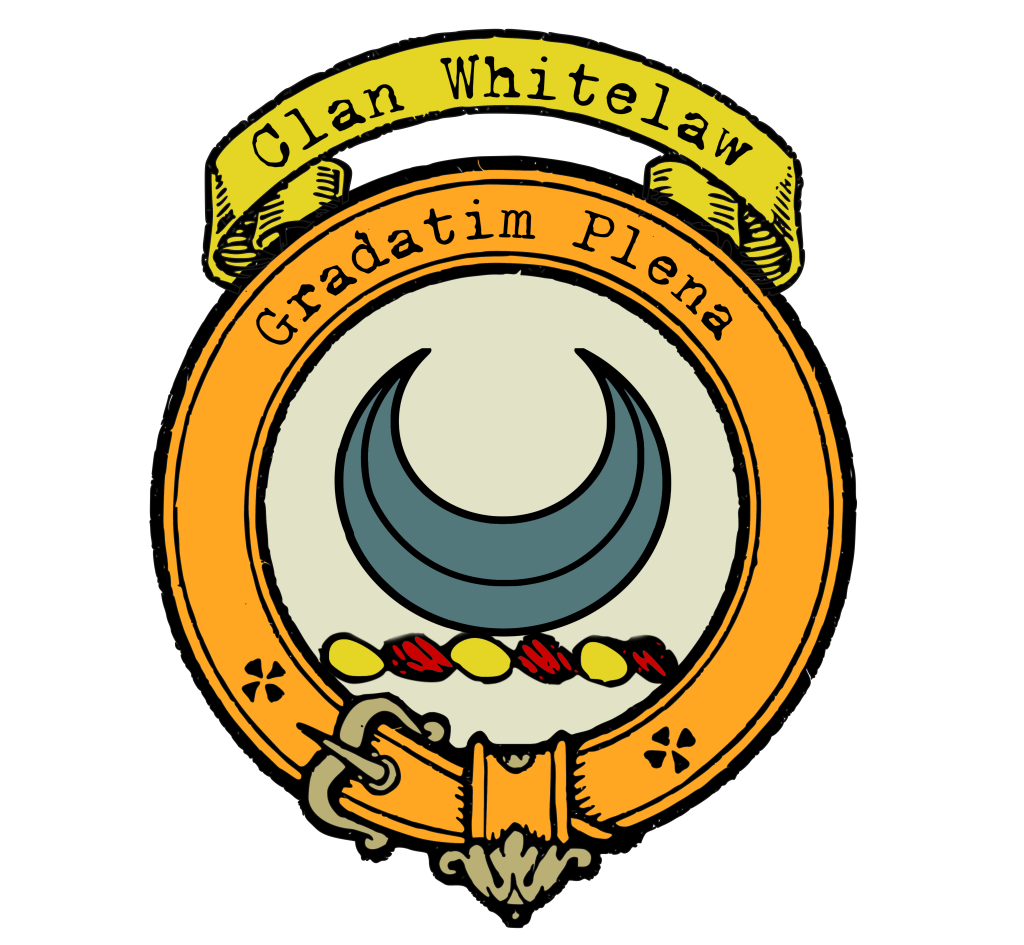Clan Whitelaw
|
|
CREST: A crescent MOTTO: Gradatim plena TRANSLATION: Full by degrees VARIATIONS: N/A |
| The roots of Clan Whitelaw, also spelled as Whytelaw and Whytlaw, are deeply embedded in the Scottish landscape. This clan has a territorial origin, tracing its name back to the lands of Whitelaw. These lands are situated in the parish of Morebattle, a picturesque part of Scotland with a rich historical background. In the parish of Bowden in Roxburghshire, there was also a barony of Whitelaw, adding another layer to the clan’s historical connections.
One of the earliest mentions of Clan Whitelaw dates back to 1296 when John de Wytelowe, hailing from the county of Edinburgh, made a significant pledge. Like many other Scottish nobles during a time of political turbulence, he swore allegiance to Edward I of England by signing the Ragman Roll. His seal, which depicted a seven-leaved flower, bore the inscription “S’ Joh’s de Vitlav.” This act signaled the clan’s presence and its role in the broader political landscape of the era. The 15th century saw Clan Whitelaw ascend to prominence, with notable figures such as Archibald de Quhitelaw taking center stage. Archibald’s career as an archdeacon in St. Andrews, particularly in the “parts of Laudonie,” demonstrated not only his ecclesiastical influence but also his role as a secretary of state to King James III (1460-1488). His accomplishments marked a high point in the clan’s history and showcased their contributions to the Scottish monarchy. Throughout the centuries, the Whitelaw surname evolved, resulting in various recorded variations including Quhitelau, Quhyetlaw, Quhytelaw, Whitlau, Whitlawe, Whytlaw, and Qwhytlawe. These changes reflect the dynamic nature of surnames over time. As with many clans, Clan Whitelaw also had its share of landholders and individuals who played crucial roles in their local communities. Individuals like Patrick Quhitlaw, a “feufarmer” of Pettindreich in 1560, and Bartholomew Quhytlaw, who possessed an instrument of sasine of land in Paxtoun in 1578, exemplify the clan’s diverse contributions. |
|
Citations:
|
|
Purchase @ Redbubble
Purchase @ Amazon.com
Purchase @ Amazon.co.uk

